Behaviour Support Services
Behaviour Support Services
NOTE: This package consists of strategies which may or may not assist in responding to behaviour. It is provided for informational purposes only and is not a substitute for professional advice or treatment from a qualified behaviour clinician.

Why Offer Choice?

Think about how many choices you make in a day – just from when your alarm clock goes off to when you go to work. Some of these choices may be: hitting snooze on your alarm clock, choosing what you want to eat for breakfast, what you put in your coffee, did you pick coffee or tea, what you packed for your lunch, what you wanted to wear to work … These are only some of the choices you may make in the morning.
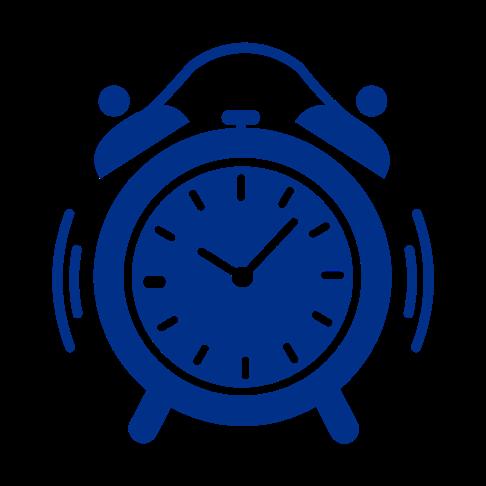
Giving choice allows the individual to feel that they are in control, provides self-determination and that they have power within their environment.
This feeling can be very motivating for the individual – choice may increase how long they want to participate or engage in an activity.

If you offer a fixed choice (e.g., A or B), it gives you the ability to set a boundary but still offer choice. This also helps determine what activities the individual likes to do.


When Do You Offer Choice?
Providing choice is a useful strategy to use when presenting an individual with a known nonpreferred activity (e.g., cleaning or a non-preferred outing).
You can give choice in many different situations, some examples are;
•
Choosing what activity to do
•
•
Choosing the materials for the activity
Choosing what activity will come next
•
•
Choosing where to sit for dinner at the table
Choosing what ingredients they can add into the meal for dinner
How Do You Offer Choice?
Remember these three things:
• Limit the options you are offering. Offer 2-3 different activities/items.

• Get the individuals’ attention before you are giving them choices.
• Only give choices of activities or items that are readily available.

Make it visual – let them see their options!
• Some examples are included at the end of this package of ways to present choices to the individual – as well as templates for you to use at home!
Examples of how to offer choice throughout the individual’s day:
Meal Times
Provide choice with the task to complete (e.g., “empty the dishwasher or set the table”), choice of the main course (e.g., “do you want sandwiches or soup for lunch?”), or choice of the side dish (e.g., “do you want salad or garlic bread with dinner?”)
Household Tasks
Provide choice of the task (e.g., “do you want to vacuum or fold the laundry?”), or choice of what time to do the task (e.g., “do you want to vacuum before or after lunch?”)
Preferred Activities
Provide choice of when the activity will take place (e.g., “do you want to go for a walk this morning or this afternoon?”), or between activities (e.g., “do you want to go for a bike ride or go swimming today?”)
Hygiene Tasks
Provide choice of when to complete the task (e.g., “would you like to shower in the morning or afternoon”), between which products to use (e.g., “do you want apple or coconut shampoo?”) or choice between how to complete the task (e.g., “want to wash your hair in the bath or in the shower?”)

How Do You Promote Independence Through
out the Day?
• Provide the necessary prompts in order to complete the task, this can include pictures, or written instructions – this is called a task analysis.

• It is important that all of the steps of the task are specific to the individual and broken down into smaller steps.
• Using this schedule can indicate what is happening throughout their day
• Having a choice between activities in the day in both chores or preferred activities (e.g., dishes or vacuuming and watching TV or the iPad).
• Reinforce their behaviour for completing different tasks (i.e., positive statements or praise – e.g., ‘Great work!’, ‘Awesome!’)

These visual schedules can break down specific steps for a task or they can break down the events in an individuals’ day.
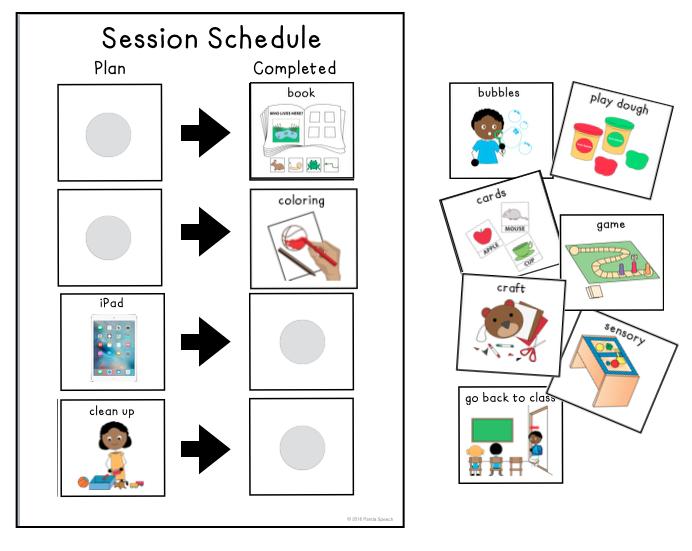
These visual schedules or task analyses templates can be found on the next couple of pages. You can also find additional layouts and stock pictures to include in the schedules on Google or you can take actual photos of the individual’s items or activities (e.g., their tea cup and the local YMCA).
These visuals allow individuals to know their options, their upcoming daily routine/schedule and break down the steps that may be needed for more complicated tasks.
Printable Instructions
On the next few pages you will find printable daily activity schedule boards, as well as choice boards. Also, some example picture symbols to represent tasks/activities.
It is recommended to print out the board and then decide if you will you use written words or specific picture symbols to affix to the board, based on the individual’s specific needs, routine, or preferred items. You can use Velcro, tape or paper clips to affix the picture symbols to the board. You can use a pencil or dry erase marker for written words.
For the daily activity schedule – the column on the left is to signify the tasks/activities to complete. Once completed, either place a checkmark or move the picture symbol over into the right column to indicate, “all done”. Then move onto the next task/ activity.
For the choice board – affix several task/activity words or picture symbol options that are available (now) to the individual. Ask the individual, “what do you want?” or “show me what you want to do.”
You do not need to fill in all of the boxes in either the daily activity schedule or the choice board. There is no problem with only having 2-3 items on each visual to avoid overstimulation.
It can be helpful to identify what the individual is “working for” or will receive as reinforcement after completing their schedule. You can offer reinforcer choices (e.g., preferred items or activities) on the choice board, then add that option last on the visual schedule.
Remember to vary the amount of tasks/activities that are non-preferred (e.g., vacuuming) with equal amounts of preferred ones (e.g., iPad or snack) in order to motivate the individual.
Daily Schedule
To Do All Done
To Do Finished

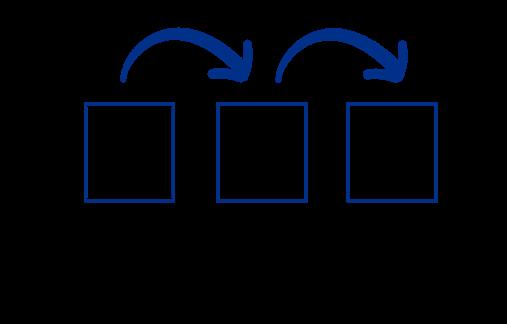
Choice Board
Choice Board


Examples to Include in a Choice Board
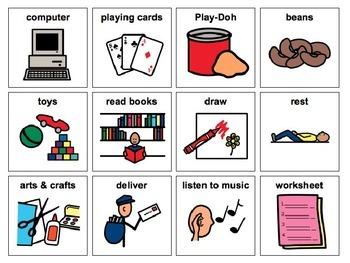
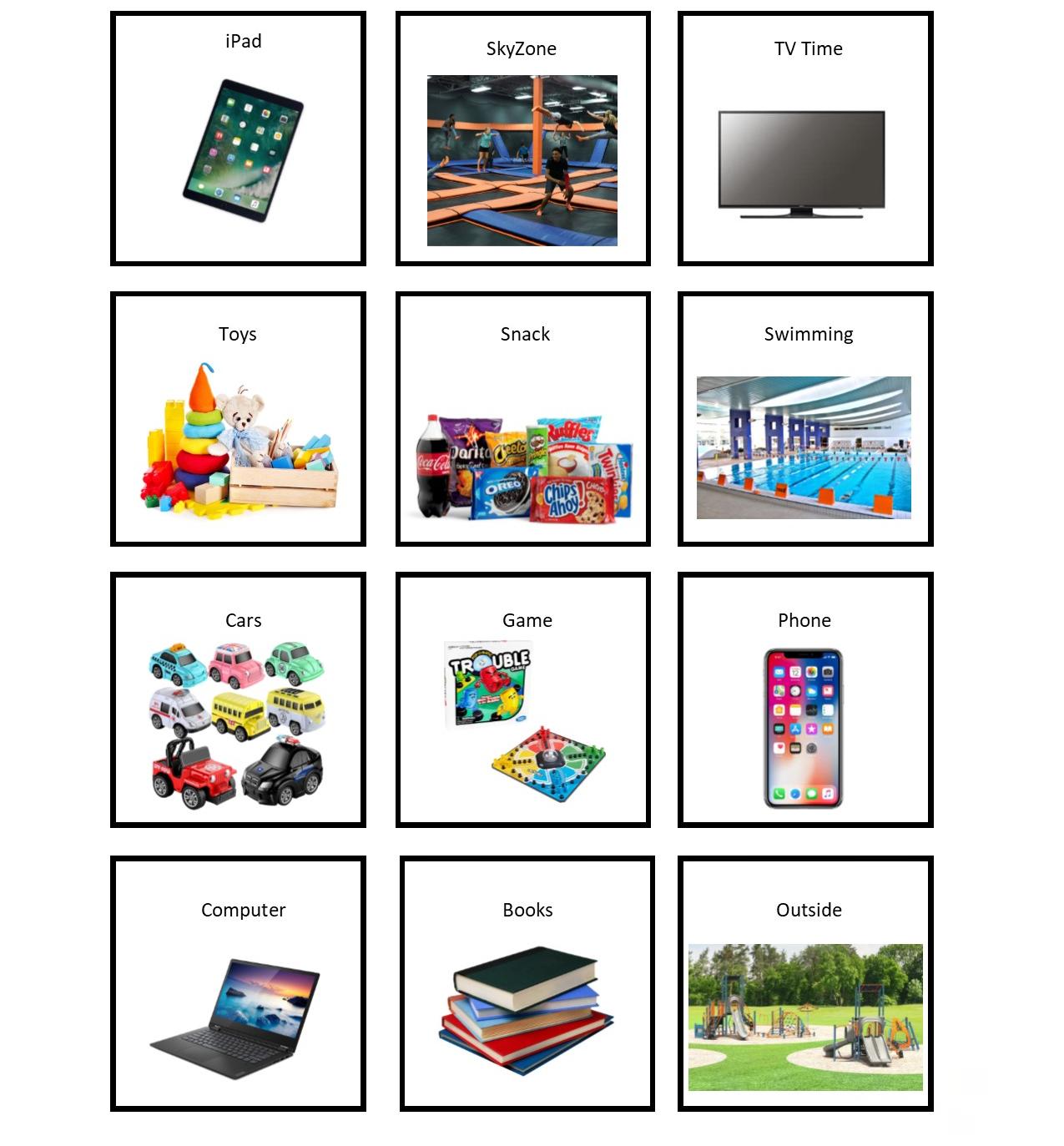
bethesdaservices.com
